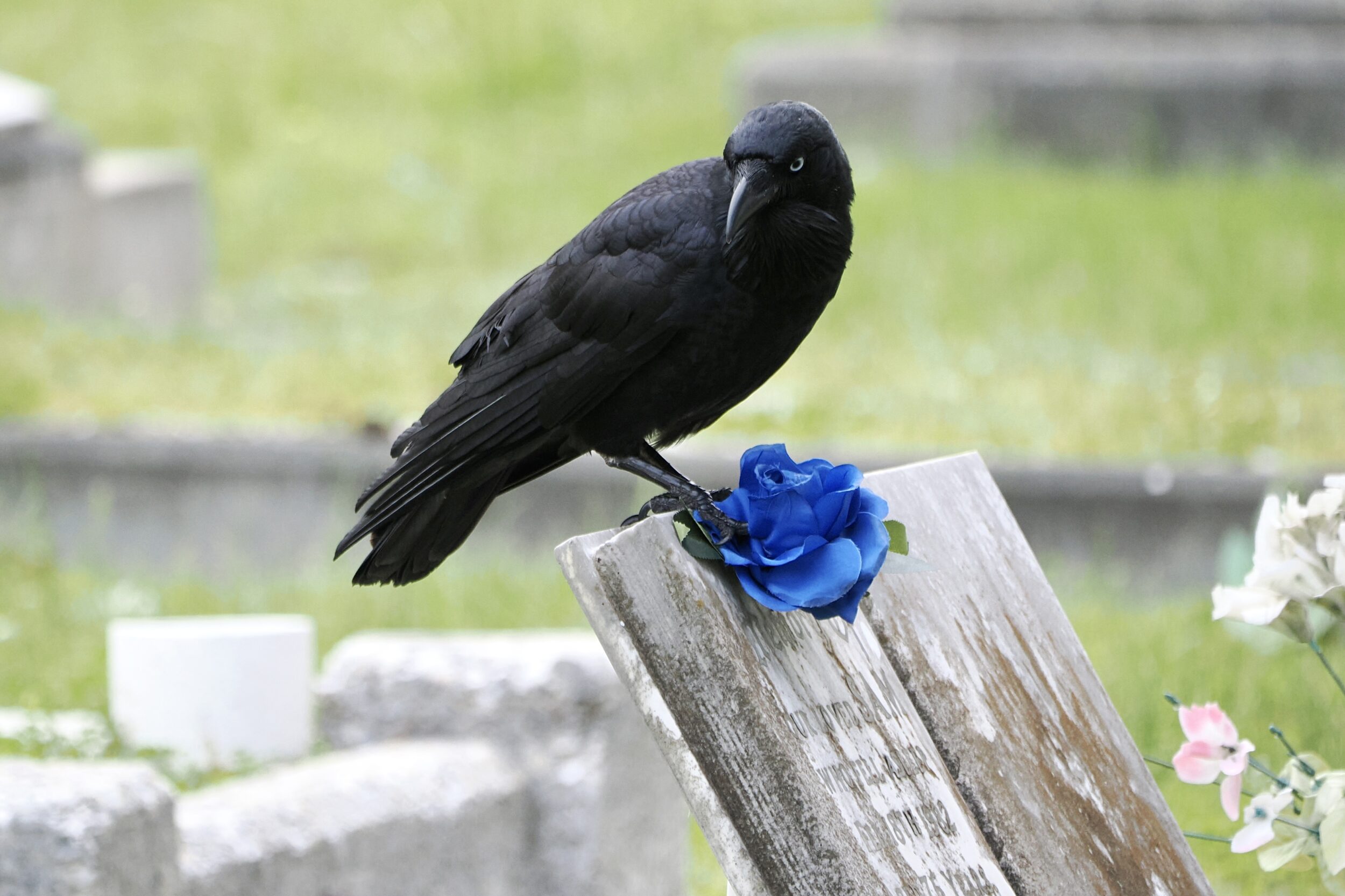In 2024 Father’s Day fell on a Sunday, and its afternoon was cloudy, but fine and mild.
Unsurprisingly, those factors made for a busy day at Perth’s largest cemetery.
By late afternoon, many Karrakatta gravestones were adorned with fresh floral (and other) tokens of remembrance.
Many Australian ravens were visible, “visiting” those gravestones.
I photographed this post’s hero/ine at 4.06 pm; s/he was far from the only raven similarly-engaged at that time.
The photo has not been egregiously falsified.
AI has not been inflicted upon it.
Another raven – who was too quick for me to “capture” an image – took off from another nearby gravestone; that raven’s beak gripped something shiny, metallic.
(it looked like the raven’s “trophy” could have been the top from a small, “premix” drink’s can)
However, according to a number of “scientific” articles published online, the notion that Corvids are attracted to shiny or blue objects is utterly false, no matter how long it has been believed by many members of Homo sapiens:
Contrary to this popular belief, crows are in fact more likely to be scared of shiny objects than attracted by them….
and:
It appears to be another myth that crows are avid hoarders or collectors. The only thing that crows are known to deliberately and frequently stash is food, for a future meal.
Click here for the full text of the relevant such “debunking” of “myths”.
I have no idea whether or not Karrakatta’s Australian ravens are an exception to the general “rules” of Corvid behaviour, nor whether the Karrakatta ravens’ readily-evident interest in and flaunting of blue or shiny objects was merely-fleeting.
Perhaps, those objects were not going to be “hoarded” or “stashed” in ravens’ nests or other “hiding places”.
However, their interest in the objects was unmistakably-actual.
I was not in “a chemically altered” state of mind”.
I have no “emotional investment” in the “myth” or “reality” of ravens as hoarders/collectors/“thieves”, nor in the truth or otherwise of their alleged fascination with shiny things and/or blue things. https://en.wikipedia.org/wiki/Kingia
The experiments upon which the “debunkers” relied were conducted in non-Australian places, with non-Australian species.
The behaviour of “pommy” ravens and crows is not necessarily replicated by Corvus coronoides, which – as its common name suggests – is an Australian raven.
It is also worth remembering that Corvids are generally very intelligent, highly adaptable.
Different populations – even populations within one particular Corvid species – may have their own particular “customs”, “habits”, adaptations, “quirks”.
What is generally true of ravens’ behaviour is not necessarily universally true.
